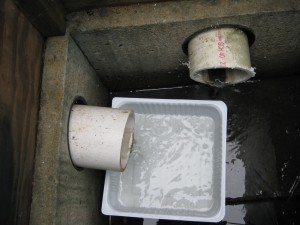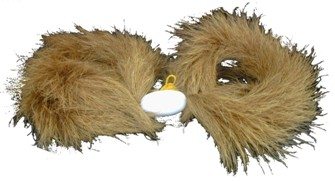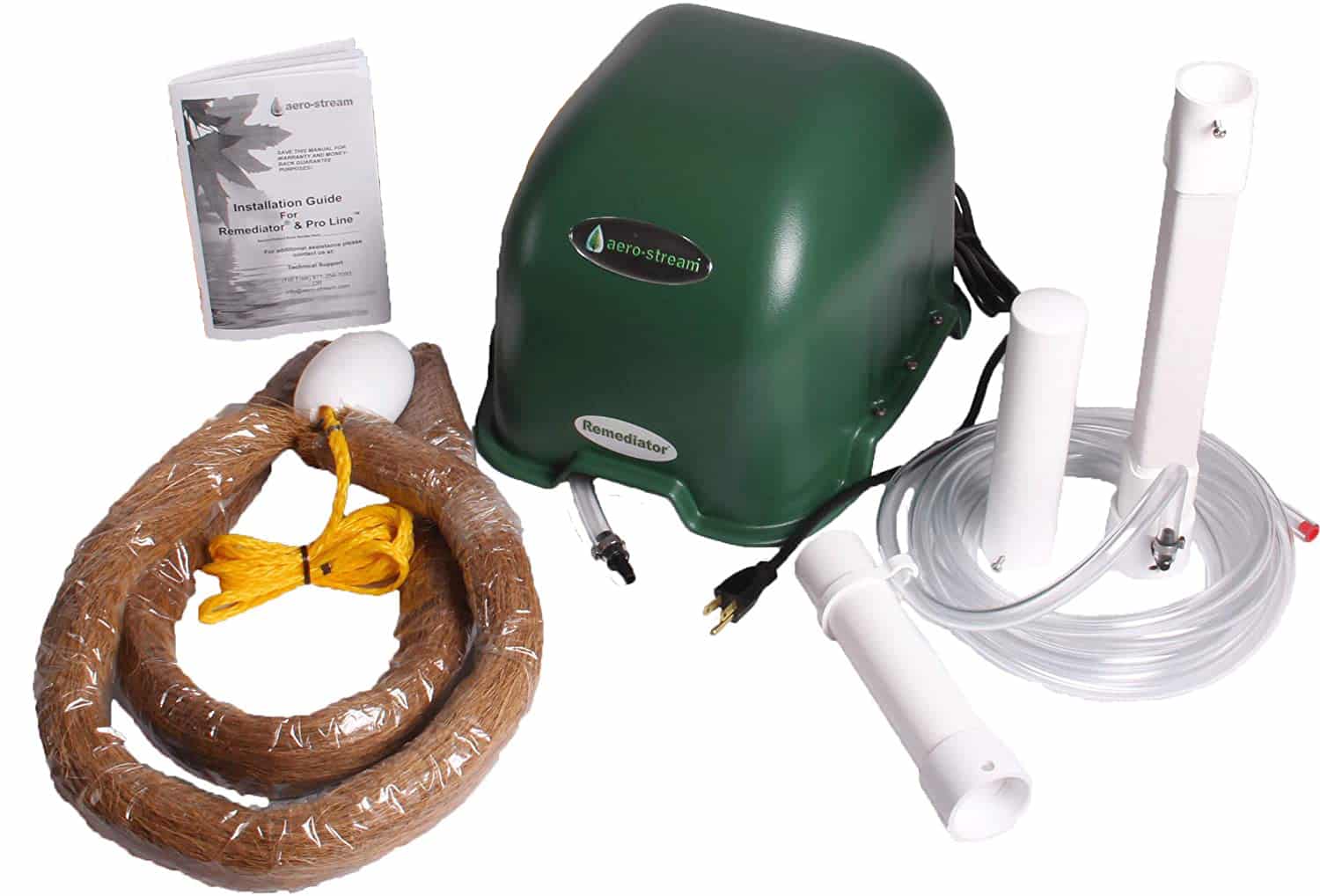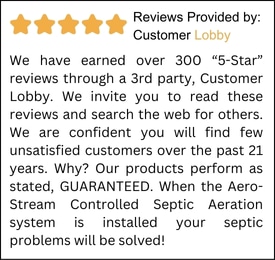Septic Aerator – Case Studies
Controlled Septic Aeration™ is Effective – The Truth & The Proof
Documented performance of a septic aerator system should be an extremely important consideration when evaluating aerobic septic system remediation designs to resolve septic tank problems. Being an engineering based company, data is important to us. These results should also be important to you. The Aero-Stream controlled septic aerator system performs in both controlled industry standard tests and in real world applications. Be aware of any company that cannot provide certified test data for their products. If they do not openly publish the data it is most likely that they do not have any and they are hoping you buy their product on blind faith because of a lower cost. Remember, you get what you pay for! Rest assured, you can always count on the Septic Aerator Experts to solve your septic system problems.
As you may be aware, there are thousands of web sites that sell septic tank additives with claims of the ability to restore your septic system. Unfortunately, these companies do not provide any data to support their claims. The reason they do not publish data is that their is no scientific basis for their claims. If their products are effective they must demonstrate a reduction of BOD5 (Biological oxygen demand – the strength of the effluent leaving the septic tank) and a reduction of TSS (total suspended solids – the amount of debris contained in the effluent leaving the tank). This is a very simple standardized test that can be performed before and after applying the “magic additive”. The additive industry lacks data or any proof of their claims. To the contrary, North Carolina State University has tested several additive products. The intensive scientific study determined that the additives had absolutely no positive effect on bacteria population or effluent quality.
Case Study 1 – Controlled Septic Aerator™ in Single Chamber 1,000 Gallon Septic Tank
NSF 40 Testing Protocol, Single Chamber 1,000 Gallon Septic Tank, 450 GPD
Summary: The project yielded a 80% reduction in BOD5 and a 60% reduction in TSS. Contrary to what you may read or heard from your pumper or contractor, controlled septic aeration by Aero-Stream® significantly reduces the effluent strength and significantly reduces solids flowing to the drain field. Some companies recklessly sell septic aerators that are of poor design and have not been tested. They rely on you the homeowner to “test” and even develop their products! This unethical behavior has lead to negative forums with the moderator lumping all septic aerator designs together. These careless accusations are absolutely false. Aero-Stream’s Controlled Septic Aeration™ is proven worldwide and documented in these case studies.
Case Study 2 – Septic Aerator in 1,500 Gallon Septic Tank
NSF 40 Testing Protocol, 1,500 G Septic Tank, 450 GPD
Summary: The project yielded a 95% reduction in BOD5 and a 86% reduction in TSS. This configuration meets the requirements of the ANSI/NSF 40 Class 1 effluent at a fraction of the cost of a packaged ATU (Aerobic Treatment Unit).
| Sample Date | CBOD5 (mg/l) | TSS (mg/l) |
| 9/6/2011 | 7.6 | 18 |
| 9/16/2011 | 7.6 | 13 |
| 9/23/2011 | 18 | 17 |
| 9/28/2011 | 11 | 33 |
| 9/30/2011 | 12 | 17 |
| 10/5/2011 | 9.4 | 17 |
| 10/12/2011 | 11 | 29 |
| Average After Aero-Stream Installed | 11 | 21 |
| Average of Standard Anaerobic Septic Tank Effluent | 220 | 150 |
| Reduction | 95% | 86% |

Case Study 3 – Septic Aerator Performing Nitrogen Reduction
Simultaneous Nitrification/Denitrification System
| 1st Tank | Tank Average | Units |
| D.O. | 5.9 | mg/L |
| Nitrite (NO2) | 1.3 | mg/L |
| Nitrate (NO3) | 3.6 | mg/L |
| Nitrate (N) | 4.5 | mg/L |
| Alkalinity | 240 | |
| Ammonia | 1.9 | mg/L |
| PH | 7.4 | |
| D.O. Bottom | 0 | mg/L |
Case Study 4 – Septic Aerator Reducing High Strength Waste
BOD5 and TSS Reduction
Introduction: The Merton Custard Shoppe’s septic systems were designed and installed to treat the wastewater from their new operation as a fast food custard manufacturing restaurant. Within 1 year of operation the system was tested for BOD, TSS and FOG to confirm the system was functioning as designed. The data revealed that the effluent flowing to the distribution field was considered high strength rather than low strength as designed. The owners were issued a corrective action letter from Waukesha County Department of Health.
Goal: The project goal was to reduce the effluent strength to < 220 mg/l BOD5, < 150 mg/l TSS, < 30 mg/l
FOG. The system was processing 900 – 1,000 GPD of wastewater.
Summary: A total of four (4) QT800UH Aero-Stream Remediator® septic aerator were installed in the second chamber of a 1,750 gallon 2-chamber tank. The project yielded a 71% reduction in BOD5 and a 76% reduction in TSS. The system now operates with a six-sigma process that is below the maximum limit by 79% for BOD5 and by 29% for TSS.
| Original Testing Data | Date | BOD5 | TSS | F.O.G. | |||
| Pump chamber | 2/12/2004 | 610 | 170 | 5.4 | |||
| Pump chamber | 2/24/2004 | 740 | 220 | 14 | |||
| Pump chamber | 2/25/2004 | 660 | 210 | 6.9 | |||
| Pump chamber | 2/29/2004 | 570 | 170 | 7.8 | |||
| Pump chamber | 3/1/2004 | 570 | 180 | 6.4 | |||
| Pump chamber | 3/5/2004 | 530 | 130 | 7.5 | |||
| Average | 613 | 180 | 8 | ||||
| std dev | 69 | 29 | 3 | ||||
| After Installing Aero-Stream Septic Aerator | Date | BOD5 | TSS | F.O.G. | |||
| Pump chamber | 1/3/2005 | 180 | 6 | ||||
| Pump chamber | 1/12/2005 | 180 | 52 | ||||
| Pump chamber | 1/13/2005 | 160 | 62 | ||||
| Pump chamber | 1/19/2005 | 190 | 48 | ||||
| Pump chamber | 1/20/2005 | 180 | 40 | ||||
| Pump chamber | 1/21/2005 | 150 | 52 | ||||
| Pump chamber | 3/6/2008 | 2 | 77 | ||||
| Average | 149 | 48 | |||||
| std dev | 15 | 20 | |||||
| USL (3 sigma) | 194 | 107 | |||||
| % Below Maximum Limit | 68% | 32% | |||||
| Reduction | 76% | 73% |
Case Study 5 – Septic Aerator Performance with Bio-Brush™
BOD5, TSS, Fecal Coliform Reduction

Summary: The Bio-Brush™ Reduced the BOD5 93% in the aeration tank and reduced the TSS 74% in the aeration tank!
| Date | BOD5* | TSS** | Fecal Coliform*** | |||||||
| ST1 | ST2 | ST3 | ST1 | ST2 | ST3 | ST1 | ST2 | ST3 | ||
| 11/4/2008 | 493 | 272 | 113 | 57 | 86 | 24 | ||||
| 11/10/2008 | 370 | 39 | 53 | 134 | 109 | 40 | ||||
| 11/18/2008 | 387 | 54 | 29 | 143 | 132 | 16 | ||||
| 12/2/2008 | 348 | 57 | 25 | 101 | 144 | 20 | ||||
| 12/11/2008 | 221 | 45 | 25 | 87 | 153 | 47 | ||||
| 12/18/2008 | 370 | 42 | 25 | 149 | 160 | 13 | ||||
| 12/30/2008 | 314 | 42 | 12 | 167 | 176 | 11 | ||||
| 1/9/2009 | 235 | 46 | 13 | 53 | 149 | 8 | Bio-Brushes Introduced | |||
| 1/15/2009 | 306 | 32 | 11 | 55 | 86 | 14 | 11000 | 240 | 240 | |
| 1/22/2009 | 247 | 41 | 15 | 30 | 20 | 8 | 4600 | 240 | 93 | |
| 1/29/2009 | 255 | 30 | 19 | 49 | 11 | 8 | 4600 | 240 | 15 | |
| 2/5/2009 | 382 | 24 | 22 | 170 | 13 | 4 | 2400 | 240 | 9 | |
| 2/19/2009 | 526 | 32 | 17 | 60 | 19 | 41 | 11000 | 43 | 9 | |
| 2/26/2009 | 358 | 22 | 15 | 40 | 22 | 5 | 1100 | 240 | 4 | |
| 3/5/2009 | 350 | 17 | 10 | 62 | 38 | 10 | 2100 | 93 | 9 | |
| 3/12/2009 | 360 | 13 | 6 | 60 | 14 | 7 | 930 | 15 | 3 | |
| 3/19/2009 | 426 | 18 | 6 | 92 | 13 | 15 | 11000 | 1100 | 3 | |
| 3/26/2009 | 359 | 9 | 9 | 118 | 8 | 10 | 1100 | 1100 | 4 | |
| 4/2/2009 | 290 | 7 | 5 | 40 | 10 | 5 | 11000 | 4 | 2 | |
| 4/9/2009 | 313 | 8 | 6 | 35 | 12 | 3 | 11000 | 43 | 2 | |
| Before Bio-Brush Installation: | ||||||||||
| Average | 345 | 272 | 113 | 85 | 86 | 24 | 5085 | 5085 | 5085 | |
| std dev | 91 | 11 | 9 | 45 | 5 | 16 | ||||
| After Bio-Brush Installation: | ||||||||||
| Average | 345 | 21 | 14 | 85 | 22 | 11 | 4690 | 190 | 6 | |
| std dev | 79 | 11 | 9 | 45 | 8 | 11 | ||||
| Reduction | 92% | 88% | 74% | 54% | 96% | 99.88% | ||||
Case Study 6 – Septic Aerator Restoring a Failed Septic System
Residential BOD5 , TSS
Introduction: Conventional In-ground septic system that was in total failure in June 2003.This was one of the pilot system used to develop the Aero-Stream® product. Aero-Stream Remediator® septic aerator was installed. Single tank system, composite samples are from the tank containing aeration equipment; household has 5 occupants.
Summary: The Bio-Brush™ Reduced the BOD5 66% in the aeration tank and reduced the TSS 63% in the aeration tank!
Date BOD5* TSS**
4/5/2004 130 50
4/12/2004 52 80
9/8/2004 91 68
10/12/2005 95 66
10/14/2005 140 110
11/10/2005 48 28 Installed Bio-Brush™
11/18/2005 180 88
03/06/2008 2 26
11/18/2008 44 49
11/24/2008 44 49
01/29/2009 74 36
02/05/2009 148 32 Low Air Flow
02/16/2009 40 11
02/19/2009 24 5
02/26/2009 40 27
Before Bio-Brush™
Average 102 75
After Bio-Brush™
Average 35 28
Reduction 66% 63%
All testing was done by Test America Labs. Wisconsin Department of Agriculture, Trade, & Consumer Protection (WIDATCP) Lab # 128053530. Wisconsin Department of Natural Resources (WIDNR). United States Department of Agriculture.
*Method SM5210B 19th ed
**Method SM2540D 20th ed
***Method 9221E
Case Study 7 – Septic Aerator Restoring Commercial System
Winery Resort/SPA BOD5, TSS & F.O.G. Reduction
Introduction: Several Aero-Stream Remediator® septic aerator were installed in the tank. Commercial facility with 14 seepage pits and 1 conventional field septic system that was near total failure in July 2009. All of the pits were 80% saturated and the field was 100% saturated. The septic system services a restaurant, banquet hall, bar, laundry facility and wine tasting room. The septic tanks are located in a courtyard area that regularly emitted foul odors during banquet events. The estimated flow rate is in excess of 6,000 GPD. The septic tanks and grease interceptors are significantly undersized for the flow rates with a typical hold time of 36 hours.
Summary: The BOD5, FOG and TSS have been reduced more than 90% with additional equipment budgeted and to be installed. All odors in courtyard have been eliminated. Ponding levels in seepage pits have stabilized and beginning to regress.
Date BOD5* FOG ** TSS***
7/29/2009 4100 68.8 5030
9/3/2009 2800 56.4 782
10/29/2009 900 15.8 715
1/20/2010 390 3.4 376
Reduction 90% 95% 93%
All testing was done by Sierra Analytical Labs. Certified by the California Department of Health Services Environmental Laboratory Accreditation Program No. 2320
*Method EPA 405.1
**Method EPA 413.1
***Method EPA 160.2
Case Study 8 – Septic Aerator Mitigates Condemnation
Lakota Street Residential System Remediation
Introduction: Aero-Stream Remediator® septic aerator was installed in the tank. This is a 40 year old, 4 bedroom home with 3 occupants. The tank is 890 gallons. The 12 month average flow rate is 174 GPD with a monthly low average of 150 GPD and monthly high average of 209 GPD. This system exhibited symptoms of failure in 2002 with surface ponding and surface discharge in an area of approximately 20 feet in diameter.
The system was pneumatically “ruptured” at a cost of $1,500 that improved the system performance for only two years. Green County issued a violation notices for the past 2 years. The next step needed to be condemnation of the home. The Aero-Stream® septic aerator system was installed on 12/16/09. After only 10 days the vast majority most of effluent surfacing ceased.
Summary: Within 60 day of installation the surface ponding has been eliminated. The BOD5 and TSS have been reduced more than 85% and 96% respectively. Fecal Coli form has been reduced by 97%.
| Date | BOD5* | TSS** | Fecal Coli form*** |
| 12/16/09 |
360 |
910 |
|
| 12/28/09 |
54 |
39 |
76000 cfu/100 ml |
| 2/17/10 |
56 |
34 |
2000 cfu/100 ml |
| Reduction |
85% |
96% |
97% |
| Sample Date | CBOD5 (mg/l) | TSS (mg/l) |
| 9/6/2011 | 7.6 | 18 |
| 9/16/2011 | 7.6 | 13 |
| 9/23/2011 | 18 | 17 |
| 9/28/2011 | 11 | 33 |
| 9/30/2011 | 12 | 17 |
| 10/5/2011 | 9.4 | 17 |
| 10/12/2011 | 11 | 29 |
| Average After Aero-Stream Installed | 11 | 21 |
| Average of Standard Anaerobic Septic Tank Effluent | 220 | 150 |
| Reduction | 95% | 86% |
Case Study 9 – TKN Nitrogen Reduction – NSF 40 Testing Protocol, Single Chamber 1,000 Gallon Septic Tank, 450 GPD
Sample Date | TKN (mg/l) |
4/26/2011 | 11 |
4/29/2011 | 13 |
9/28/2012 | 47 |
10/5/2012 | 44 |
10/13/2012 | 42 |
10/18/2012 | 46 |
10/24/2012 | 18 |
2/14/2013 | 39 |
4/18/2013 | 42 |
4/25/2013 | 46 |
5/2/2013 | 52 |
5/10/2013 | 52 |
5/17/2013 | 45 |
5/23/2013 | 42 |
5/29/2013 | 41 |
6/5/2013 | 50 |
| Average | 39 |
| Standard Septic Tank Effluent | 60 |
| Reduction TKN | 34% |
All testing was done by Barnstable County Health Laboratory (M-MA009)
*Method SM5210B 19th ed
**Method SM2540D 20th ed
Case Study 10 – TKN Nitrogen Reduction – NSF 40 Testing Protocol, 3 -Chamber 1,500 Gallon Septic Tank, 450 GPD
|
Sample Date |
TKN (mg/l) |
Sample Date |
TKN (mg/l) |
Sample Date |
TKN (mg/l) |
|
12/22/2011 |
18 |
11/16/2012 |
39 |
5/23/2013 |
39 |
|
12/22/2011 |
48 |
11/29/2012 |
37 |
5/30/2013 |
44 |
|
5/12/2012 |
45 |
12/7/2012 |
43 |
6/5/2013 |
43 |
|
5/24/112 |
24 |
12/13/2012 |
38 |
6/12/2013 |
51 |
|
5/30/2012 |
32 |
12/21/2013 |
39 |
6/21/2013 |
53 |
|
5/31/2012 |
30 |
1/3/2013 |
39 |
6/27/2013 |
50 |
|
6/15/2012 |
18 |
1/11/2013 |
42 |
7/10/2013 |
40 |
|
6/22/2012 |
16 |
1/18/2013 |
40 |
7/17/2013 |
32 |
|
7/12/2012 |
36 |
1/24/2013 |
37 |
7/24/2013 |
42 |
|
7/21/2012 |
32 |
1/30/2013 |
40 |
8/2/2013 |
51 |
|
7/26/2012 |
32 |
2/8/2013 |
34 |
8/9/2013 |
37 |
|
8/16/2012 |
26 |
2/14/2013 |
48 |
8/16/2013 |
31 |
|
8/23/2012 |
30 |
2/20/2013 |
41 |
8/23/2013 |
48 |
|
8/30/2012 |
38 |
2/28/2013 |
37 |
8/29/2013 |
54 |
|
9/12/2012 |
30 |
3/8/2013 |
47 |
9/5/2013 |
45 |
|
9/13/2012 |
30 |
3/30/2013 |
32 |
9/13/2013 |
45 |
|
9/28/2012 |
100 |
4/3/2013 |
32 |
9/17/2013 |
42 |
|
10/5/2012 |
51 |
4/11/2013 |
40 |
9/26/2013 |
44 |
|
10/13/2012 |
43 |
4/18/2013 |
39 |
10/2/2013 |
51 |
|
10/19/2012 |
25 |
4/25/2013 |
47 |
10/9/2013 |
45 |
|
10/24/2012 |
11 |
5/2/2013 |
40 |
10/17/2013 |
47 |
|
11/2/2012 |
19 |
5/10/2013 |
44 |
10/23/2013 |
45 |
|
11/9/2012 |
35 |
5/17/2013 |
32 |
10/31/2013 |
44 |
|
Average |
39 |
||||
|
Standard Septic Tank Effluent |
60 |
||||
|
Reduction TKN |
35% |



